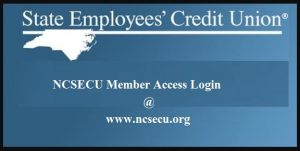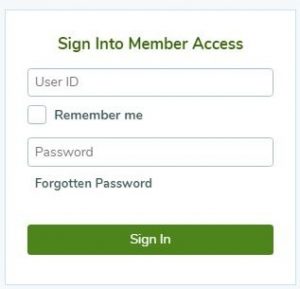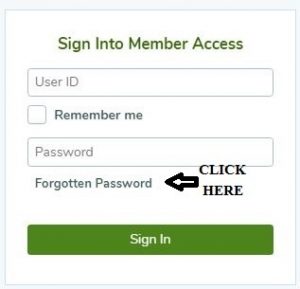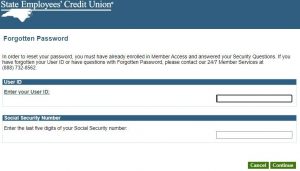Introduction
Would you like to sign in to your www.ncsecu.org account? Do you need to know the bank routing number and other information for NCSECU?
One of the benefits offered to account holders by the State Employees Credit Union is NCSECU Member Access.
If a person has a North Carolina State Employees Credit Union account that is functioning, they may sign in to see and access their financial information online. The user has access to a variety of account advantages and functionalities once signed in.
The official NCSECU Member Access login and resetting forgotten password process will be covered in this blog. If anyone is experiencing problems logging into their account, they should consult the complete login guide with step-by-step instructions.
But first, a quick backgrounder about NCSECU and the NCSECU Member Access portal (https://www.ncsecu.org/OnlineServices/MemberAccess.html).
About NCSECU and NCSECU Member Access Login
State Employees’ Credit Union (SECU) is the name of a not-for-profit banking organisation managed by North Carolina state staff. The SECU was established in 1937 and is currently one of the biggest financial institutions in the United States in terms of membership and asset size.

The primary objective of the credit union is to offer its members accessible financial products and services such as banking and savings accounts, mortgages, financing, and investment options.
State Employees’ Credit Union (SECU) is a Raleigh, North Carolina-based credit union with a state charter from the state of North Carolina. It is governed by the Credit Union Division of the NC Department of Commerce. The National Credit Union Administration (NCUA) of the U.S. federal government insures contributions made by SECU members.

Staff members of the State of North Carolina first established State Employees’ Credit Union in the year 1937. The credit union was initially run with $437 in funds and 17 memberships. By 1960, the credit union had approximately $25 million in assets and was serving over 70,000 members.
State Employees’ Credit Union had 2.6 million members and assets of about $53.1 billion by 2022. In terms of assets and membership, this elevated State Employees’ Credit Union to the second-largest position in the country. Twenty-five percent of all North Carolinians make up the overall membership.
In terms of membership and valuation of assets, SECU is the second-biggest native membership credit union in the United States. On August 28, 2022, SECU had $53.1 billion in assets, more than 2.6 million customers, and 270 locations spread across all 100 counties in North Carolina. The most comprehensive ATM system in North Carolina and the no-fee CashPoints network are operated by SECU.
Personnel of the state of North Carolina and their direct relatives, as well as the immediate families of current SECU members, are the only people who can join the credit union.
Membership Requirements
State Employees’ Credit Union is a cooperative managed by its members that is not for profit. Only those who match the criteria for eligibility are allowed to join.
- Staff members for North Carolina’s state
- federal personnel appointed to state agencies in North Carolina
- Staff members of the public school boards in North Carolina
- North Carolina National Guard personnel
- Officers of North Carolina’s counties’ social services, wellness, psychological care, and civil defence
- Officials of organisations established for the benefit of state employees in North Carolina
- Those working for departments or agencies whose personnel are covered under the North Carolina State Personnel Act
- People who had stepped down from the aforementioned occupation or employment as pensioners and/or annuitants. This encompasses former workers who are “vested” and haven’t revoked or otherwise ended their ability to receive a pension and/or annuity in the future.
- Wives of members who passed away while working in their sector and who haven’t remarried
- close relatives of a current member
- People who share an economic unit1 with an existing member.
For the benefit of its members, NCSECU developed an online platform accessible at https://www.ncsecu.org/OnlineServices/MemberAccess.html that allows them to view various facilities provided by NCSECU – anywhere and at any time. It enables access to a variety of financial offerings and more privileges associated with them for its customers. The SECU offers a variety of services, including financing, bank accounts and cards, trusts and estates, insurance and ventures, and services related to taxes.
The following are a few advantages and applications of the portal:
- Check the record of past transactions
- The remaining funds in your account
- The past records of loan repayments on the account
- Statements of account on paper.
- Enrol in e-statements
- Pay your bills digitally with BillPay.
- Transfer funds among accounts
- Application for loans and accounts
- Make a donation
Rules & Requirement Guidelines: NCSECU Member Access Login
Log-in requirements are very basic and simple for the NCSECU Member Access portal account, users will need the things listed below:-
- Login URL for the NCSECU Member Access portal i.e. https://www.ncsecu.org/OnlineServices/MemberAccess.html
- The individual should be a legit current or previous employee of NCSECU
- NCSECU Member Access login requires a working Employee ID and passcode.
- A functioning internet engine.
- An internet-connected computer, laptop, smartphone, or tablet.
After one has all of the above information, users can proceed to learn the step-by-step instructions for the NCSECU Member Access Signup process which has been provided below in detail. Now, let’s quickly go over the registration and login information for NCSECU.

How to Login to the NCSECU Member Access Account Guide?
Kindly adhere to the straightforward instructions below for accessing your NCSECU Member Access account:
- To begin with, you must access the authorised website. You can go to the official site by clicking on the https://www.ncsecu.org
- Visit the authorized NCSECU Member Access login page at https://www.ncsecu.org/OnlineServices/MemberAccess.html
- Going ahead now please enter your User id and password into the provided empty input field.
- Next, please press the ‘Sign in’ button.
- Now access it and manage it.
All members have the ability to sign in and maintain their accounts electronically via the mobile version of the website. The State Employee Credit Union mobile website offers access from mobile devices.
The full website has a stripped-down version for smartphones and tablets. Follow the instructions above to log in after visiting the device log-in page.


How to reset the login password for the NCSECU account?
NCSECU Member Access system customers no longer need to request support from their service providers for resetting their email passwords. Members can change their password at any moment on the NCSECU Member Access via the steps outlined below:
- To get to the NCSECU Member Access login page, open a browser for the internet and go to the NCSECU Member Access portal at https://www.ncsecu.org/OnlineServices/MemberAccess.html
- You would be taken to the NCSECU login page after that.
- To reset your password, click the link that is placed underneath the login form.
- Type your login name and the last 5 digits of your Social Security number on the subsequent page.
- Select “Continue” from the menu.
- Choose the security questions and enter the response you came up with during enrolling on the following page.
- Respond to an additional query in writing.
- Generate a fresh password.
Do you need NCSECU Login Help?
The NCSECU Member Access contact information is listed below, and using it may enable you to quickly find solutions to all of your issues. Take steps to go without hesitation and call the services’ helpline at (888) 732-8562.
Conclusion:
About the NCSECU platform, that was all the details. We sincerely hope you enjoyed and gained something from reading this post.